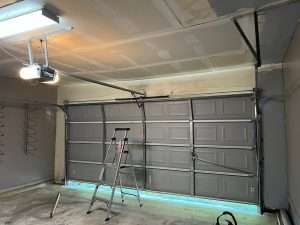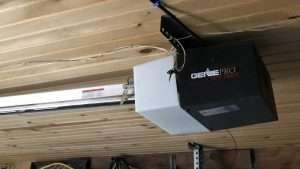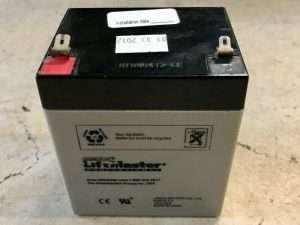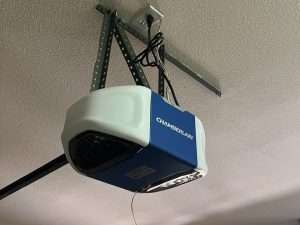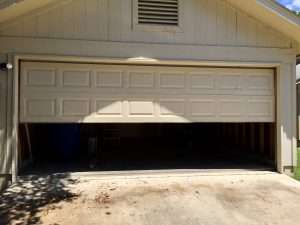The Complete Guide to Garage Door Insulation
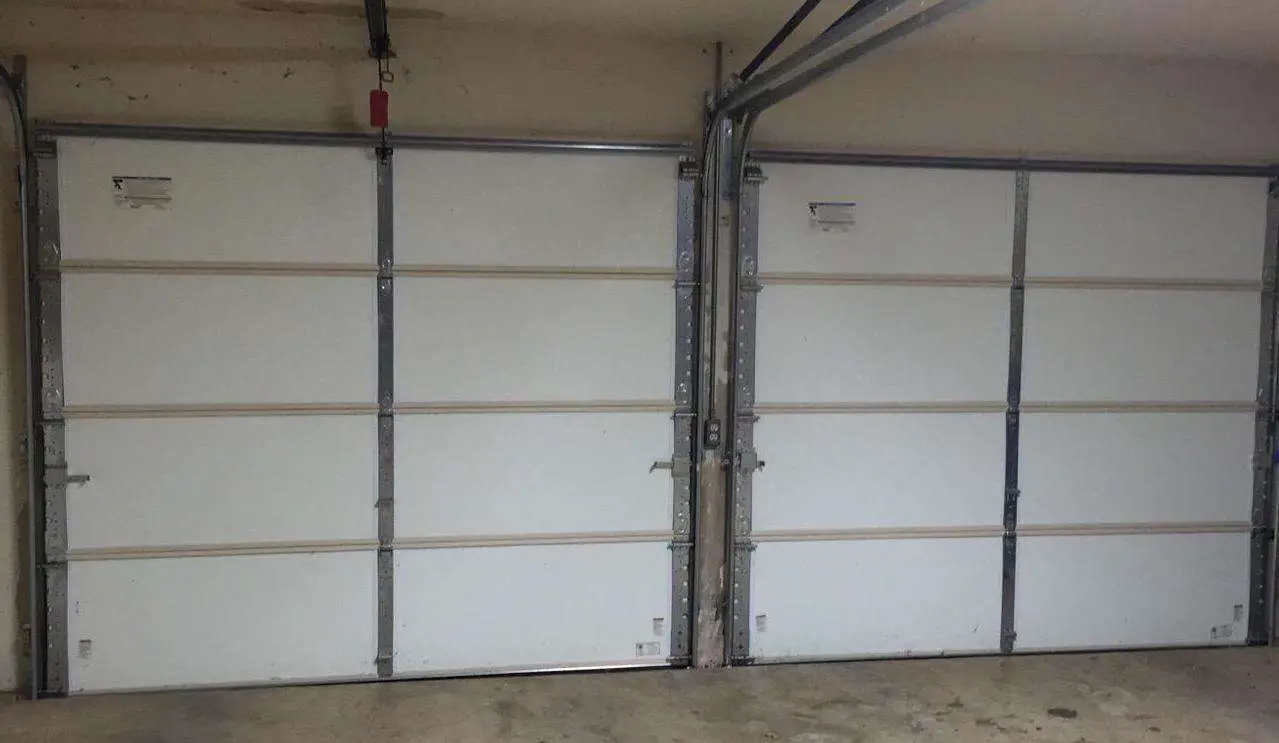
Homes have changed dramatically in recent years and the garage is no exception. Now more than ever we are seeing garages transformed into masterpieces with epoxied floors, custom cabinetry, air conditioning, and LED lighting. With these advancements comes the need to keep your garage warm in the winter and cool in the summer. Let’s take a look at the benefits of insulating your garage door to make your space more usable for hobbies and projects.
What is the R-Value Rating on Garage Doors?
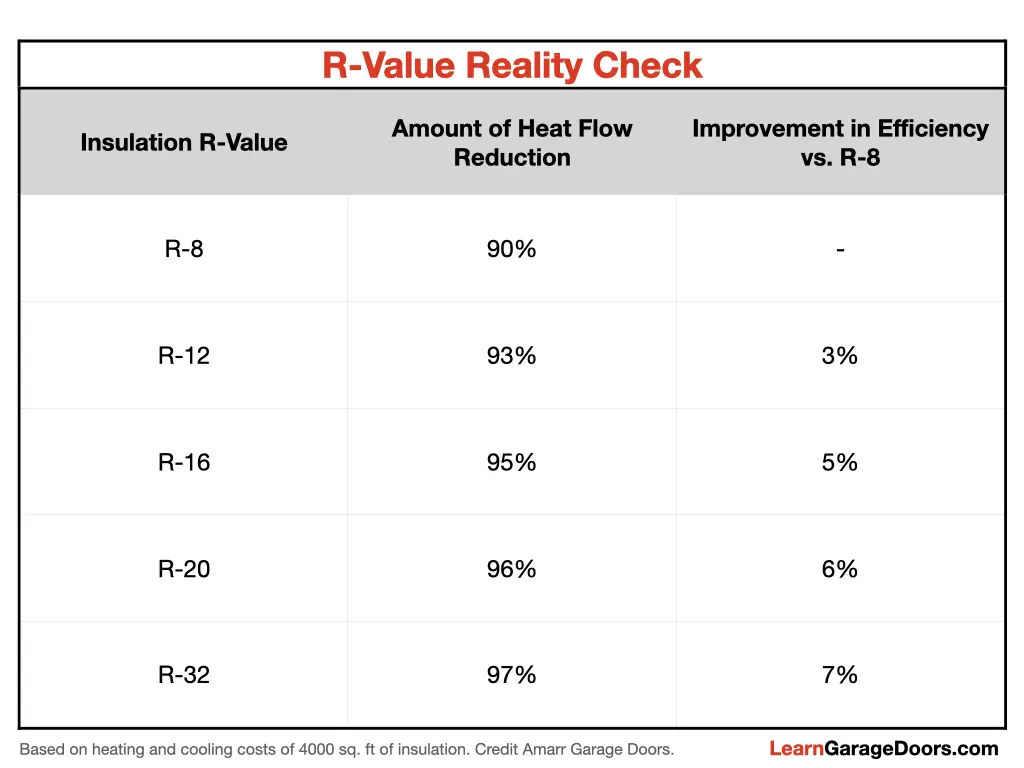
The R-Value rating of insulation is the thermal “resistance” of the insulating material to heat transfer. The “R” in R-Value is referring to resistance, and it’s all about heat. When it’s a hot summer day, you are relying on the insulation to keep the hot air outside. When it is a blistering cold winter night, you are relying on the insulation in your home to keep the heat inside. This resistance to heat transfer through your walls or garage door sections is the R-Value. The higher the number, the better.
As a reference, the standard framed 2×4 wall on a home has an R-13 insulating value when fiberglass insulation is installed. The standard for attic insulation above your garage is R-30, and many times can be much higher depending on the home. A good R-Value to shoot for in a garage door is around R-9 to R-11, which is what comes standard in most 2” thick steel back garage doors with polystyrene white foam. Your requirements may be different if you live in a more extreme climate.
As illustrated by the chart above, the increase from R-8 to R-20 is a 6% improvement in efficiency. The problem with this is the cost increase from a steel back with polystyrene white foam (around R-9 to R-11) to a steel back with polyurethane foam (around R-17 to R-20) can be anywhere from 20-40% depending on the manufacturer. Only you can decide if spending on average 30% more is worth the 6% increase in reducing heat transfer.
Insulated Garage Door Terminology
In the garage door industry, you will see manufacturers refer to their various models and options using marketing terms they decided would best describe their product. Here are some common terms used to describe the different types of insulated garage doors.
Non-Insulated Garage Door
- Single layer
- 1-sided steel
- Pan door
- Standard duty
- No insulation
Vinyl Back Insulated Garage Door
- Double layer
- Exposed insulation
- Standard duty
- White foam insulation with protective vinyl backing
Steel Back Garage Door
- Triple layer
- 2-sided steel
- Steel back
- Medium duty with polystyrene foam
- Heavy duty with polyurethane foam
- Flush metal interior with woodgrain texture
Types of Insulated Garage Doors
When purchasing a new garage door, insulating options and R-values are not cut and dry like the old days. Manufacturers today can make any claim they want about the R-value of their garage door because there is no governing agency overseeing the claims. If you want a garage door like they used to be built, ask for a 2” thick garage door. This will give you the best insulating values and most likely be much stronger, unless you’re sourcing a cheap builder grade option.
Vinyl Back Insulated Garage Doors
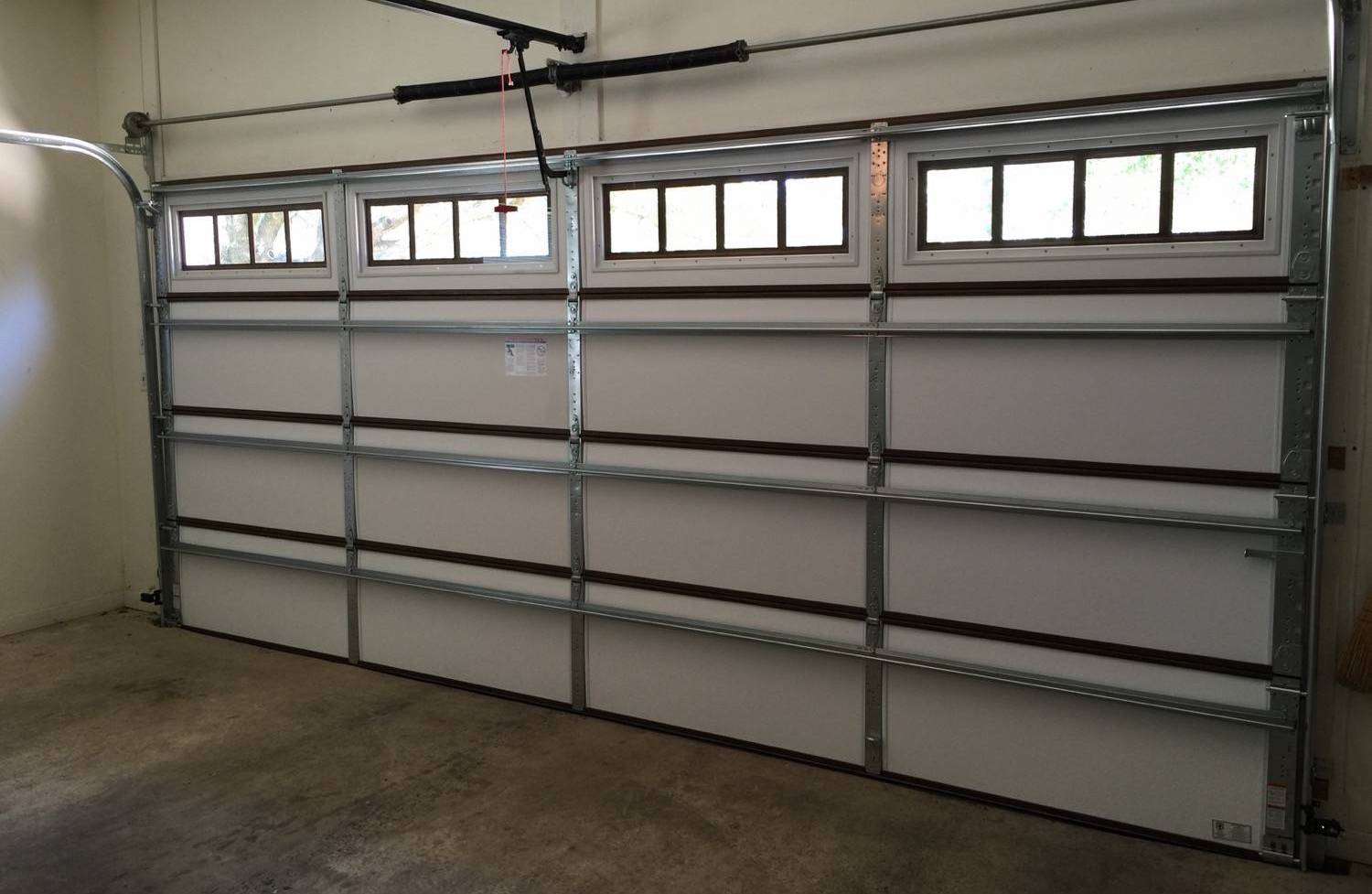
This is our least favorite option for insulated garage doors because they can be loud due to the insulation being exposed. If you must go this route due to cost concerns, have the installing garage door company add full struts to the door when it is ordered. The reason for this is that vinyl back insulation is added to a regular non-insulated door. The extra weight can sometimes cause garage door sections to prematurely generate cracks in the sections. A fully reinforced garage door with a strut installed on every section will not have these issues.
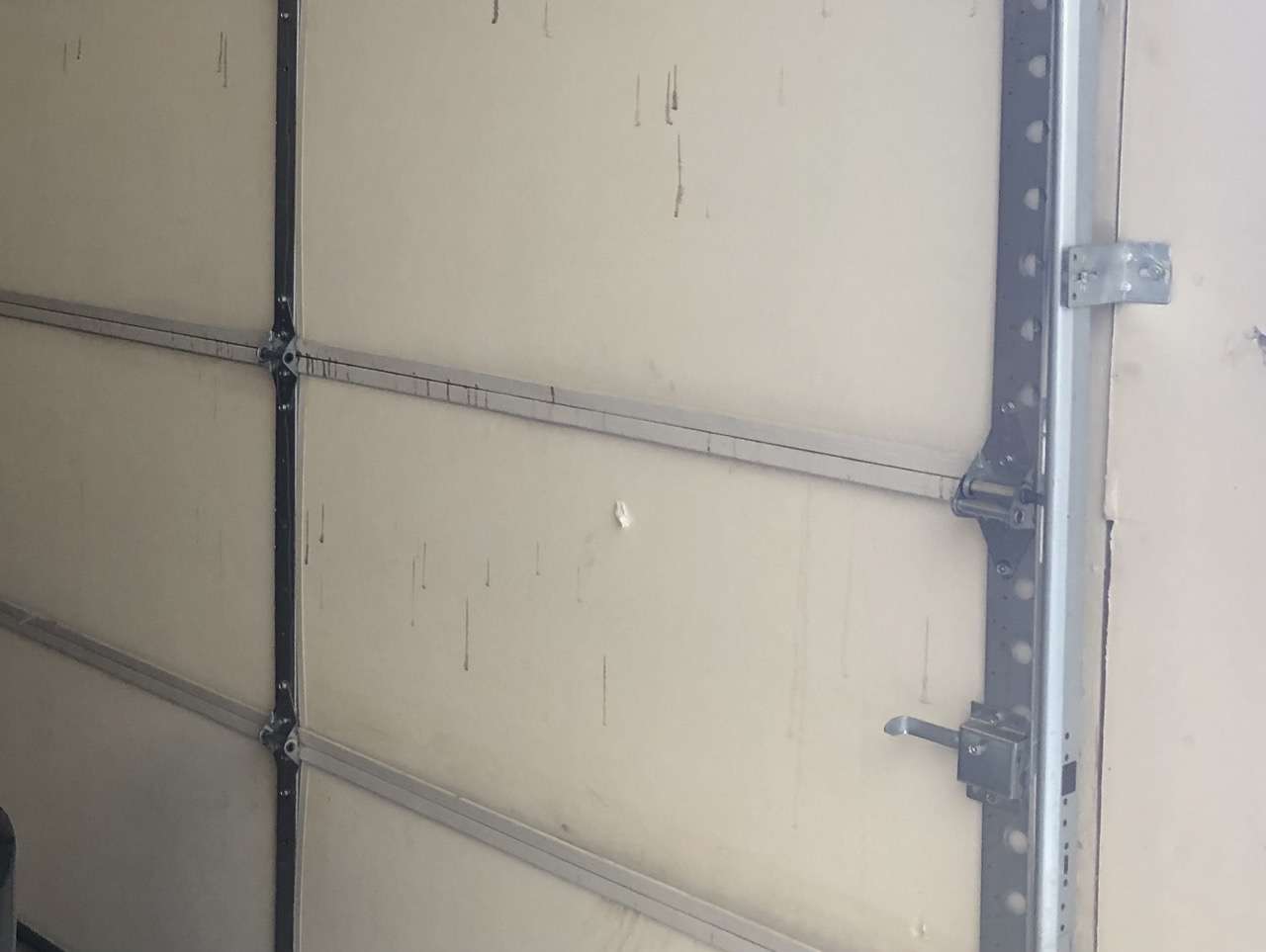
Vinyl back garage doors have exposed insulation which can be damaged. While it does have a “vinyl backer” which provides protection, a good hit from a broom handle, basketball, or bike handle will leave a mark and many times penetrate the insulation. This will eventually lead to more and more damage as time goes on. The vinyl backer is also harder to clean. If you’re searching for something more durable and easier to keep clean, a steel back garage door is your answer.
Builder Grade Vinyl Back Garage Doors
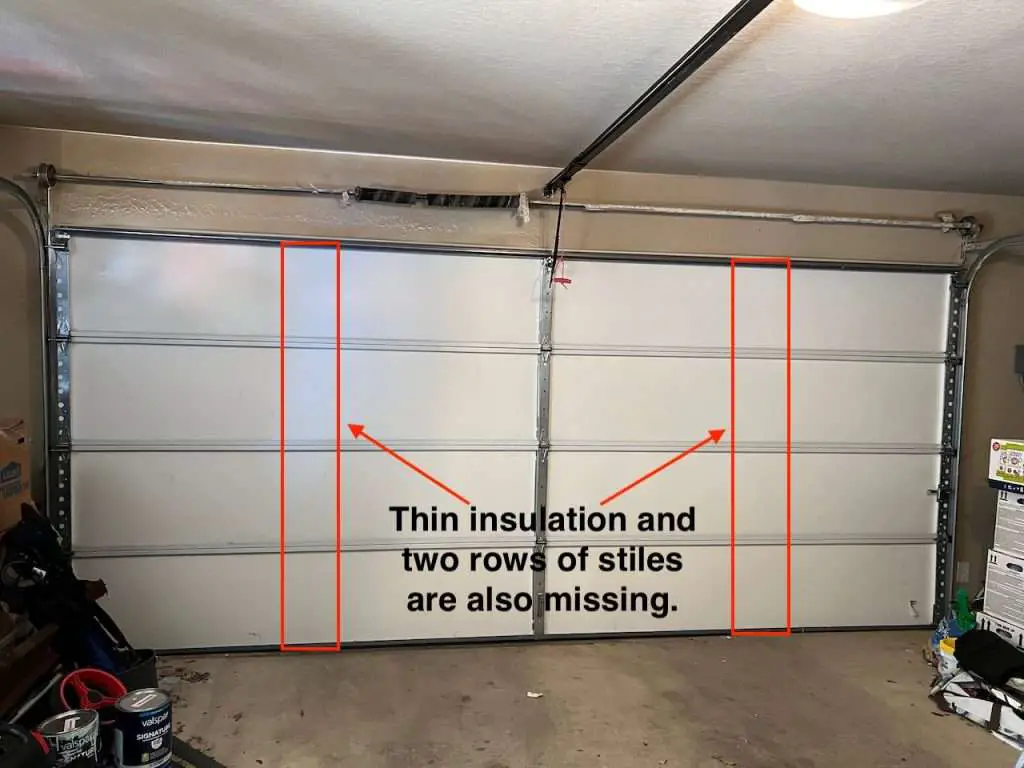
Not all vinyl back garage doors are created equally. The single stile Windsor garage door shown above is mainly installed for home builders and was created to meet an “insulation spec”. What this means is the builder can say they have installed an insulated garage door on your home which makes everyone feel warm and fuzzy. What they don’t tell you is how poorly built the garage door is.
I have outlined in red in the photo above where two additional vertical rows are installed on a properly built garage door. Because home builders are trying to save money, they purchase these garage doors dirt cheap on a national contract leaving the homeowner to deal with the fall out in a few years. Make sure you are comparing similar garage doors when getting pricing for a new garage door.
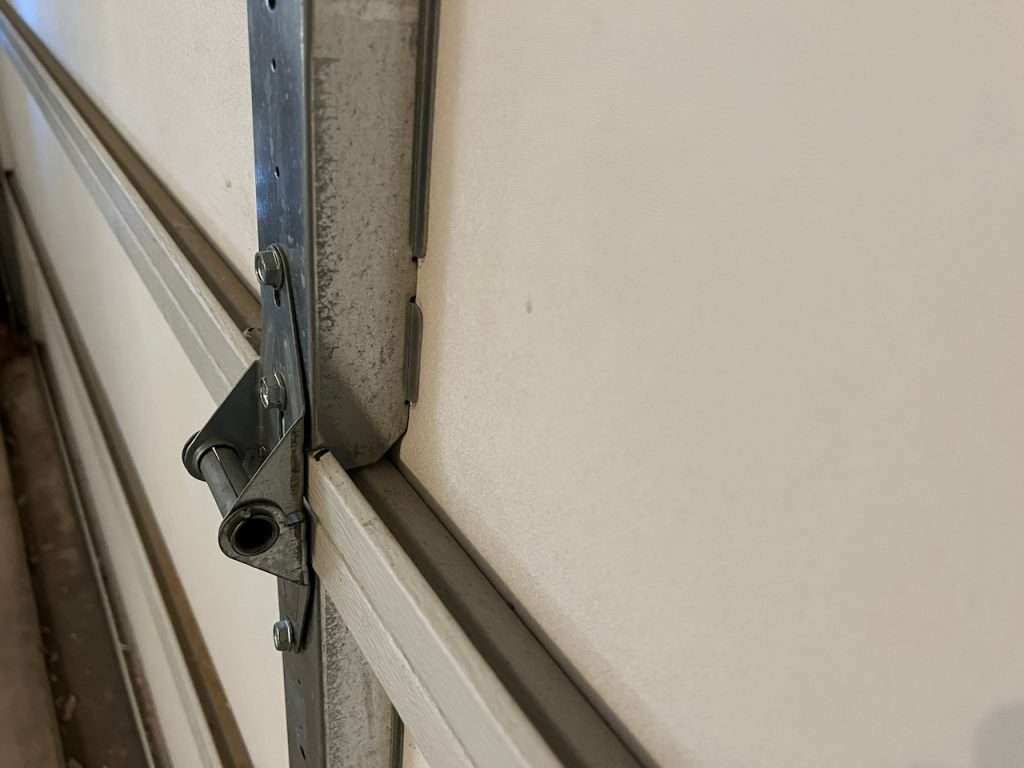
A 2” thick vinyl back garage door will have almost a full two inches of polystyrene white foam insulation filling the section cavity. This has been standard for years and is how a vinyl back door should be constructed. As you can see in the photo above, the insulation is not even reaching the half way point on the section. What you have here is a lot of missing insulation. Just because they call it a vinyl back, doesn’t mean the insulating value is the same.
2” Steel Back Insulated with Polystyrene Foam
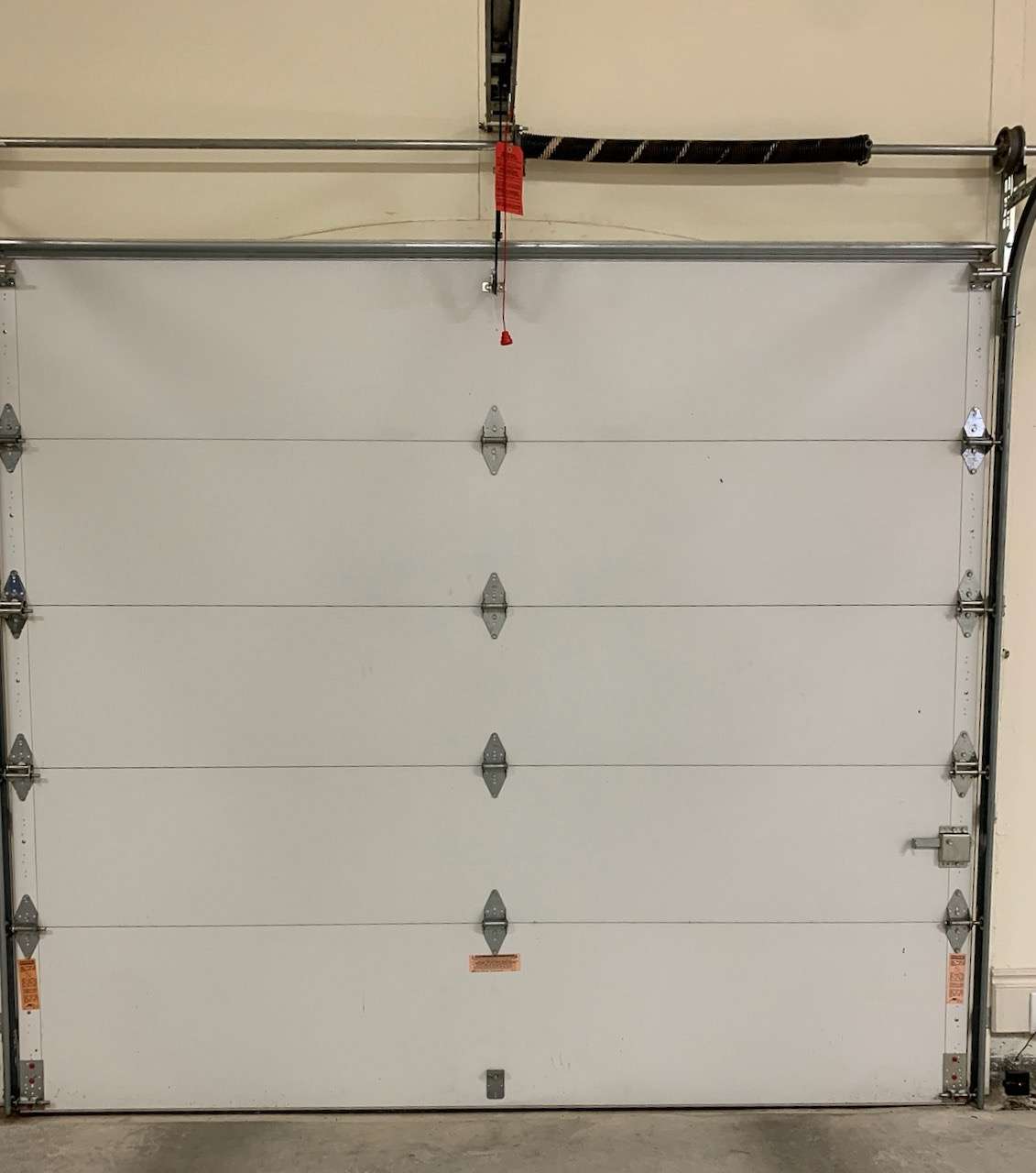
The best bang for the buck is a steel back insulated garage door with polystyrene insulation (white foam). A polystyrene insulated garage door will have an insulating R-Value of around 9-11. You will get the benefits of having the stronger steel back construction, and the insulating value will be higher than builder grade doors using thinner sections or vinyl back options.
2” Steel Back Insulated with Polyurethane Foam
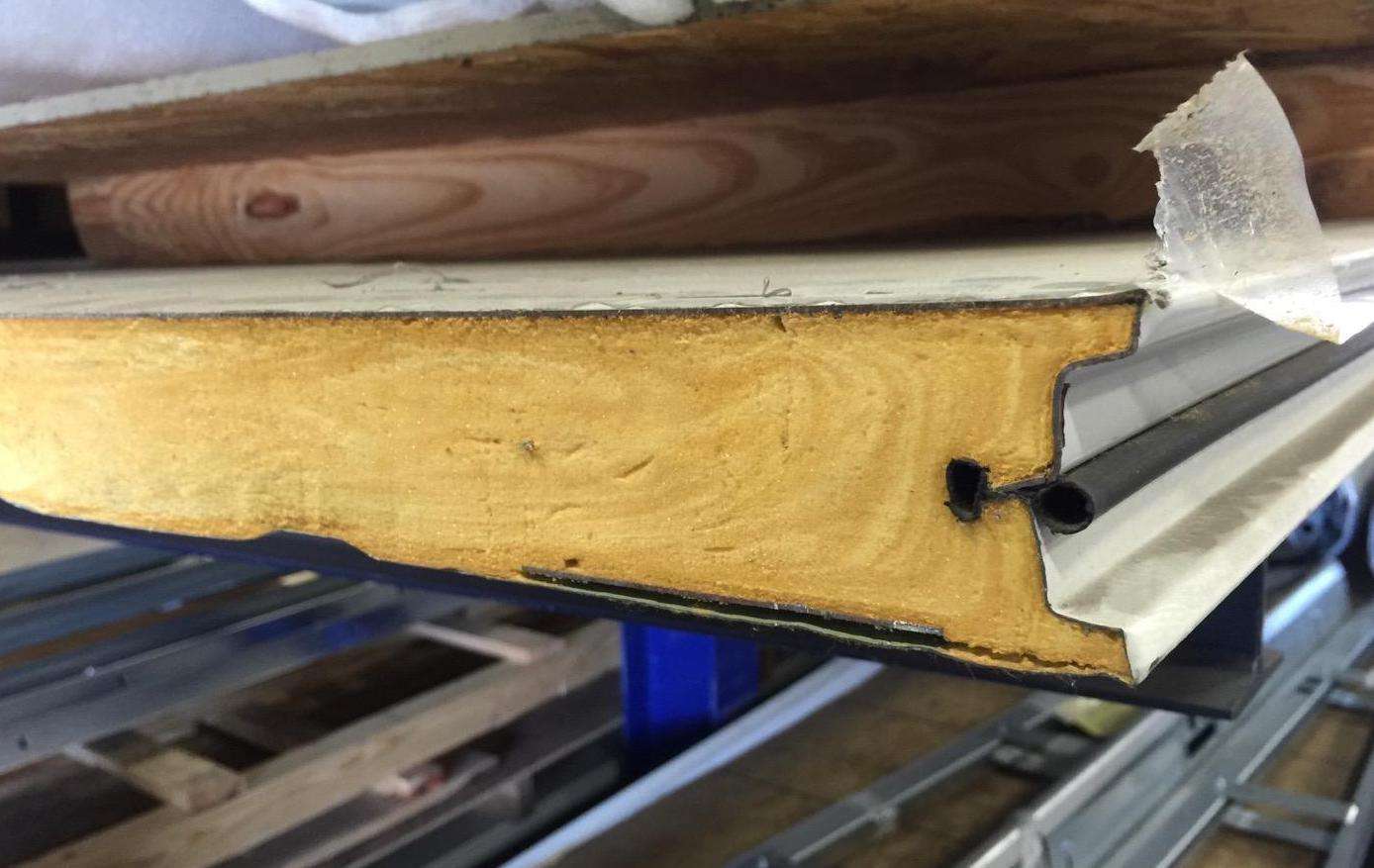
The best garage door insulation hands down will be the polyurethane option. It is injected into a steel back garage door section and not only provides the highest insulating value, it also adds strength to a garage door section. The polyurethane foam that is injected into garage door sections bonds to the metal surface, creating a stiff, rigid product. This helps reduce flex in garage door sections, which will help reduce noise and cracking over the years.
The downside to polyurethane foam options is they can be expensive. Like we mentioned earlier, polyurethane foam garage doors can cost anywhere from 20-40% more, depending on the manufacturer of the garage door. The upgrade cost from polystyrene insulation to polyurethane foam can be a significant increase, especially when there are industry shortages.
Insulated Wood Garage Doors
Custom wood garage doors are offered with insulation in beautiful carriage house and contemporary designs. These options are far less popular due to the extreme cost of these doors. With the advancements in printing bi-directional woodgrain patterns on garage doors, I don’t see a reason to go with a high maintenance wood garage door. The new options available today by garage door manufacturers offer beautiful realistic woodgrain patterns in a low maintenance steel garage door for much less money than a custom wood door.
Lastly, if you damage a custom wood garage door, many times the whole door will need to be replaced so the outside pattern lines up properly where the sections meet. Some manufacturers offer replacement sections, but a garage door company would have to send off one of your good sections, so it can be matched properly. The labor, shipping cost, and time associated with this type of replacement would be astronomical.
What is the Best Garage Door Insulation?
The 2” steel back garage door with polystyrene white foam (R-9 to R-11) is the best bang for your buck in our opinion.
Polyurethane insulation is “technically” considered to be the best in the garage door industry. The insulating properties are superior to polystyrene (white foam) and the dense construction of polyurethane foam adds significant strength to a garage door. Combine this with the bonding properties of polyurethane to metal, and you have a product that is designed to last for years.
Polyurethane foam is similar to the spray insulation you see installed in new homes. The foam is designed to expand into every crack and crevice, therefore leaving no room for air gaps or penetration. Excess foam that spills over during the installation is shaven off, providing the perfect fit and finish.
With that being said, polyurethane foam garage doors can be expensive. Occasionally, the cost can be out of a homeowners budget. This is why we feel a 2” steel back garage door with polystyrene white foam is the best bang for your buck. Most models of garage doors built this way will have an insulating value of R-9 to R-11, which gets you close to a standard 2×4 framed wall. The steel back construction will also provide more strength in the sections, which will make for a longer lasting garage door.
Insulating R-Value of Popular Garage Door Brands
Generally speaking, most garage door companies are using the same insulation in their door lineups. While some have fancy marketing terms, most of the garage doors listed below will have similar insulating properties. Below are some of R-Value specs listed by popular garage door brands.
Please Note: If you are comparing the same thickness of garage door sections between manufacturers, they should have similar insulating values, considering many use the same foams. If one manufacturer is making much higher claims in terms of R-Value, ask them how they are achieving these results.
2” Vinyl Back Garage Doors
Clopay Classic Steel Value Plus: R-Value 6.3
Amarr Lincoln: R-Value 6.64
CHI 2251: R-Value 7.94
Overhead Door 1500: R-Value 7.4
2” Steel Back with Polystyrene Insulation (white foam)
Clopay Classic Steel Premium: R-Value 9
Amarr Lincoln: R-Value 9
CHI 2283: R-Value 9.65
Overhead Door 1600: R-Value 9.8
2” Steel Back with Polyurethane Insulation (yellow spray foam)
Clopay Classic Steel Premium: R-Value 18.4
Amarr Olympus: R-Value 19.40
CHI 2216: R-Value 17.19
Overhead Door 5760: R-Value 17.5
Metal Thickness on Steel Back Garage Doors

One thing to keep in mind when shopping for a new steel back garage door is the outside face of the door will use a thinner metal. The industry standard for the outside face of a non-insulated garage door is 25 gauge. Most manufacturers are using 27 gauge metal on their steel back doors on the inside and outside faces.
When shopping for a new steel back garage door, make sure the metal thickness is at least 27 gauge. If you can find a manufacturer using a 26 gauge metal on the inside and outside for their steel back, even better. It doesn’t sound like much, but the extra thickness will add strength to the sections, which results in longer life. Some manufacturers offer 24 gauge steel back garage doors, but this is usually only for the outside face. The inside layer of steel will normally be 27 gauge.
Most garage door manufacturers will list the gauge of their garage doors on their website. If they don’t, it’s typically for a reason. That brings us to Wayne Dalton.
Wayne Dalton Garage Door Metal Thickness
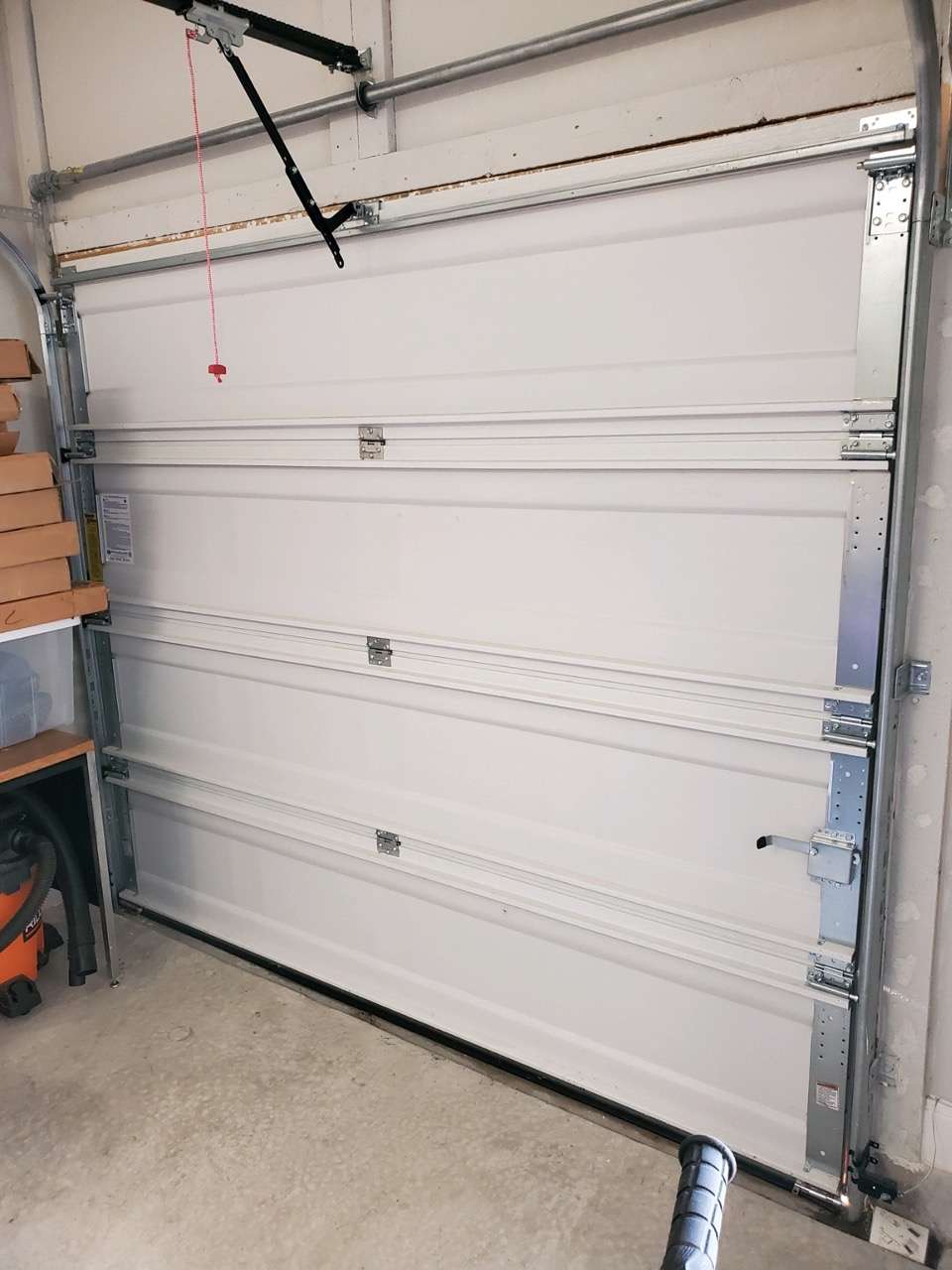
Wayne Dalton sells a 9100-9600 model of garage door that was specifically designed to be used for new home builders. The door sections and tracks come preassembled, and the Torquemaster spring system is wound with a drill. The garage door is manufactured this way, so it can be installed in around one hour, and it gets most of its strength from the polyurethane foam which is injected into “strut” channels.
The inside of this garage door uses a paper backer instead of the thicker vinyl back. The paper backing is more susceptible to damage compared to vinyl back because the protective material for the insulation is much thinner. Standard 2” garage door reinforcement struts are not used on this model of door because it doesn’t have standard stiles. Struts are “foam in place” and sometimes have a J-strut installed for doors with wider widths or automatic openers installed.
Manufacturers like Amarr, Clopay, and CHI list the metal gauge thickness on their website or in their brochures for their different garage door models. At the time of writing this, we have not been able to find a metal thickness for Wayne Dalton 9100-9600 models of garage door. It has been rumored they are using a 30 gauge metal, but we have not been able to confirm this. I do know it is very thin because we work on these garage doors daily.
If any garage door manufacturer does not list the thickness of metal they are using for their garage doors, then they are most likely trying to hide something. The thickness of metal used is one of the most important factors when choosing a new garage door.
Metal Thickness on Hardware
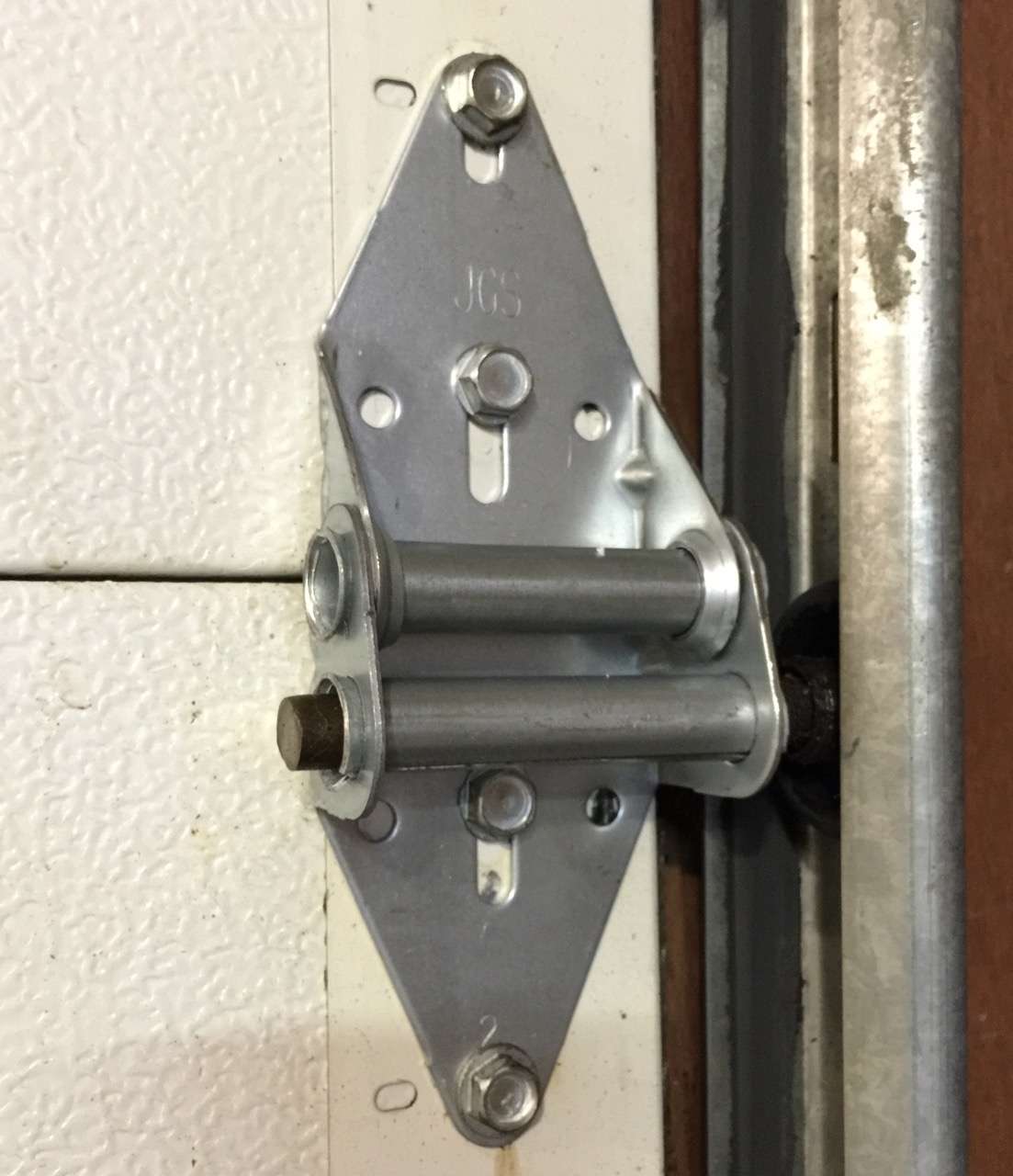
Another area where so many garage door manufacturers will cut cost is by providing hinges, roller carriers, bottom brackets, and struts that are made from thinner materials. The standard for garage door hinges was 14 gauge, but on many doors today you will find 18 gauge hinges. When purchasing a new garage door, make sure the hinges are 14 or 16 gauge, which will provide longer life and reduce flex when opening and closing.
The standard for reinforcement struts was 20 gauge, but these are becoming harder and harder to find. Today, many builder garage doors are using 24 gauge struts which have a lot of flex and 22 gauge is starting to become the new standard. If you can get 20 gauge struts installed on your new garage door, that would be the way to go.
Insulated Garage Door Window Options
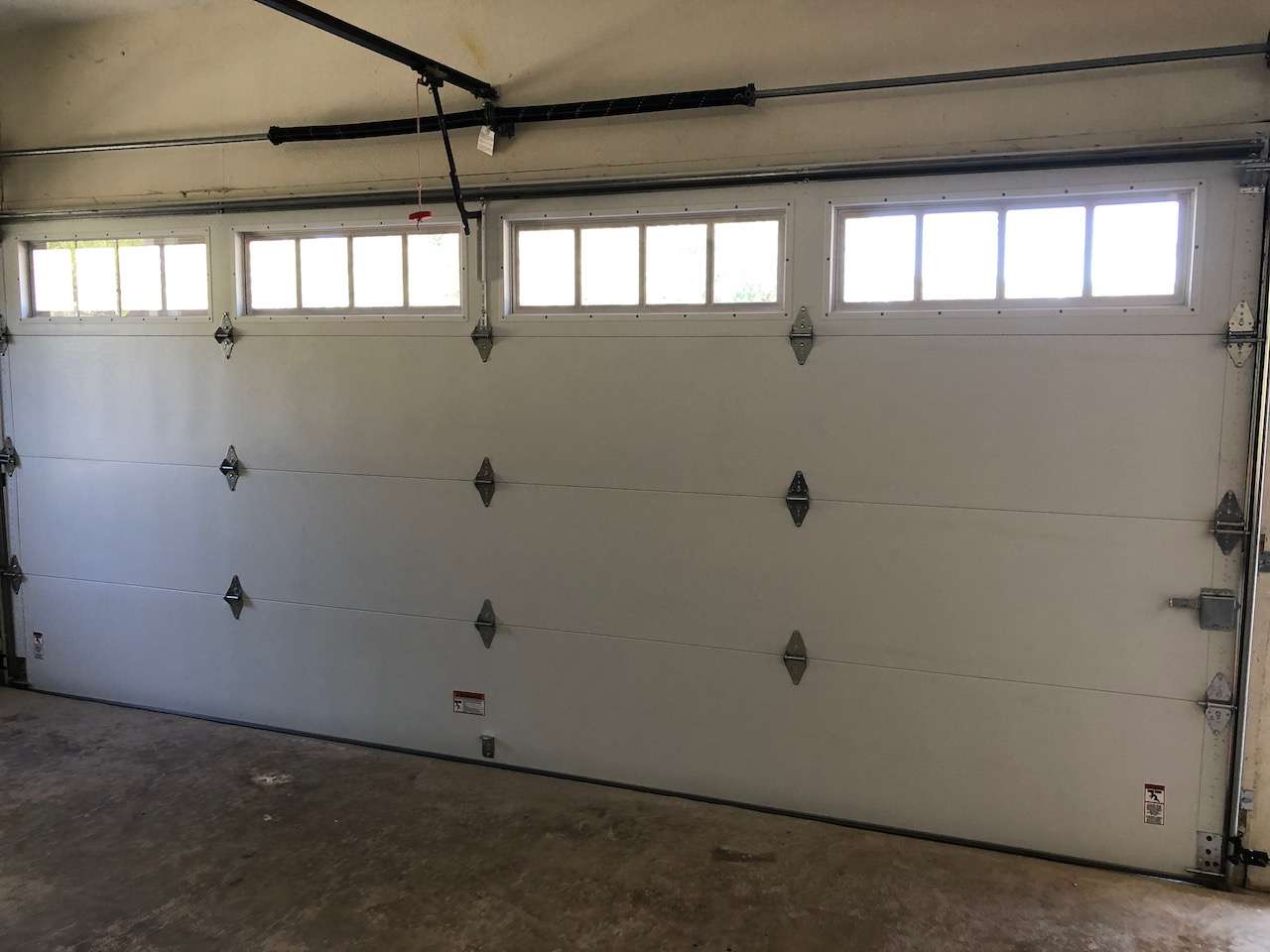
Most insulated garage doors sold today do not have insulated windows. Yes, I know what you’re thinking… that doesn’t make any sense. No it does not, but the reason for this is insulated windows on a garage door can be expensive, which usually turns off most homeowners.
A sealed, double-pane glass option is typically best as it will provide you with the best performance and value. Insulated windows in a garage door should be siliconed into the frame to prevent air from leaking around the windows. Choosing insulated windows will help to keep a consistent temperature in your garage year round.
Make sure when choosing windows, you are getting real glass versus acrylic. Acrylic windows can scratch or yellow over time, causing the windows to lose their appeal and therefore needing replacement. Once again, make sure the windows are sealed around the frames, which will ensure the best insulating performance.
Insulated Glass is Heavy
Insulated glass consists of two panes of glass sandwiched together, which adds significant weight to the window section of a garage door. If you’re wanting insulated windows, it’s best to request them when ordering a new garage door. The reason for this is the manufacturer will calculate the appropriate springs for the door based on the additional weight added by the heavier insulated glass. This will guarantee you have a balanced garage door and help prevent prematurely wearing out your automatic opener.
Vents Installed on Insulated Garage Doors
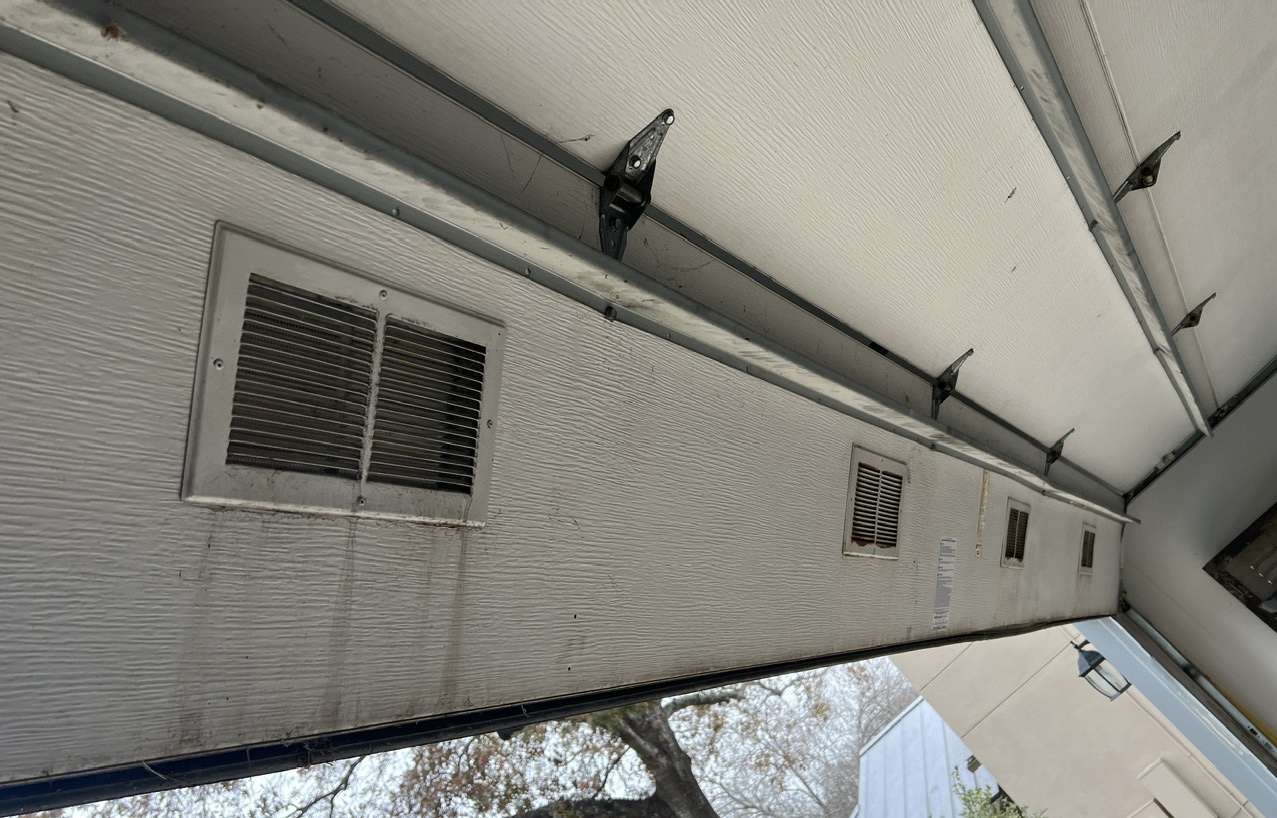
Most insulated garage doors do not have vents, and that is for a good reason. It doesn’t make any sense to purchase an insulated garage door only to have hot and cold air pass right through it. For this reason, many distributors do not offer this option when buying a new steel back garage door. If you have special requirements where you need this done, it’s probably best to call around to find someone who offers vented steel back sections. A steel back section will require a special vented frame that is designed for the thickness of a garage door section.
Outside Lock on Insulated Garage Doors
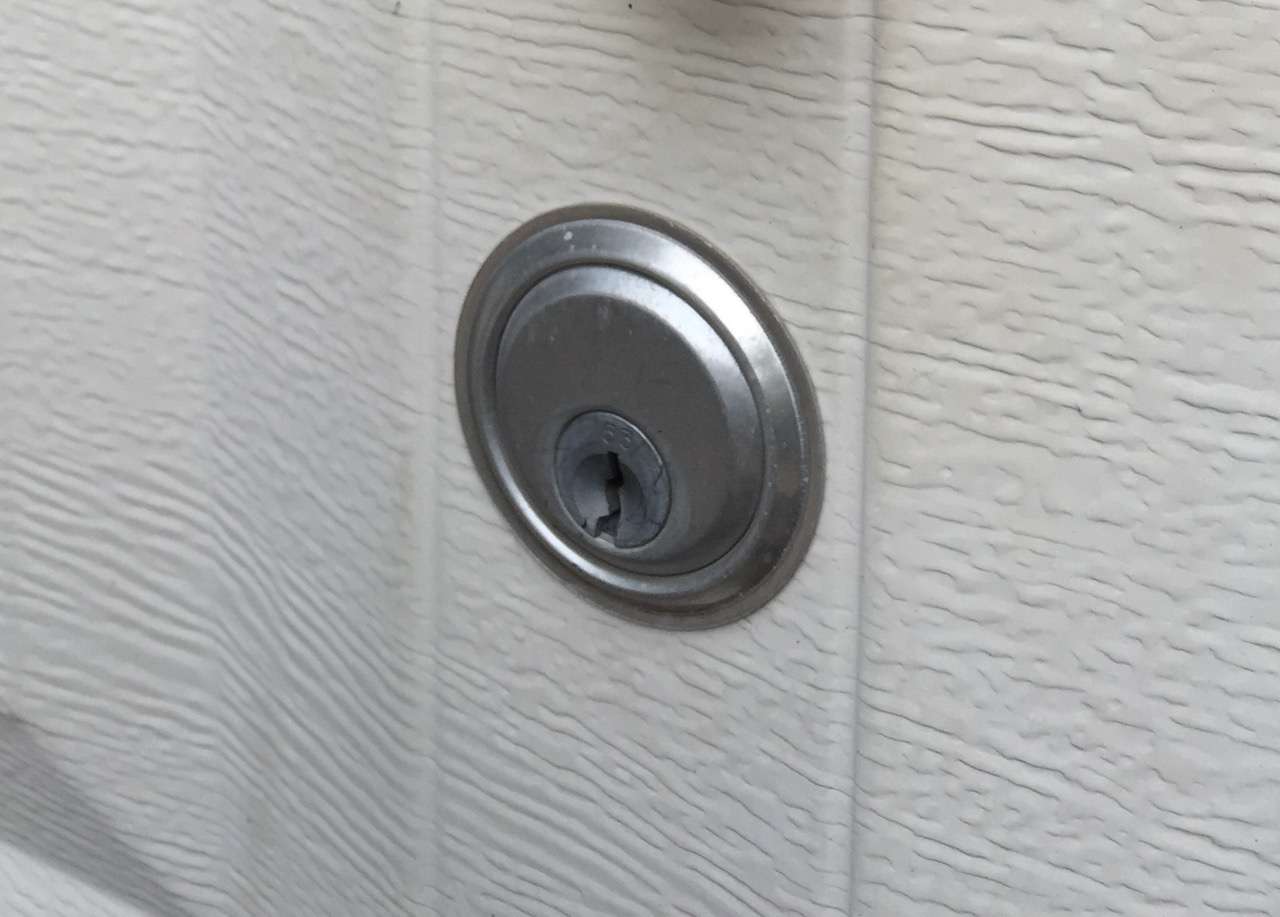
Outside locks on steel back garage doors are rare. Many times when a keyed lock is installed on a steel back section, the lock will start to come loose because the first thing someone grabs when they need to open the door manually is the lock handle. The stile thickness on a good quality non-insulated garage door is 20 gauge. This is where an outside keyed lock will be mounted on a standard non-insulated garage door.
Like we discussed earlier, the metal thickness on steel back garage doors is usually around 27 gauge and many don’t have full 20 gauge stiles behind the metal interior skin. Many times this thinner metal will start to give out and could possibly tear over time. The result is an expensive garage door with a torn or damaged face, which could be a costly replacement. We normally try to talk someone out of having an outside lock installed on a steel back garage door unless it is an absolute must.
Decorative Hardware on Insulated Garage Doors

Steel back garage doors are expensive and any time you can prevent from having to puncture them, the better off you are in the long run. For years, the only decorative hardware installed on garage doors was made of metal, and it required the installer to drill holes in the outside face to attach it with screws. Many homeowners don’t like the fact that their brand new insulated door is being punctured.
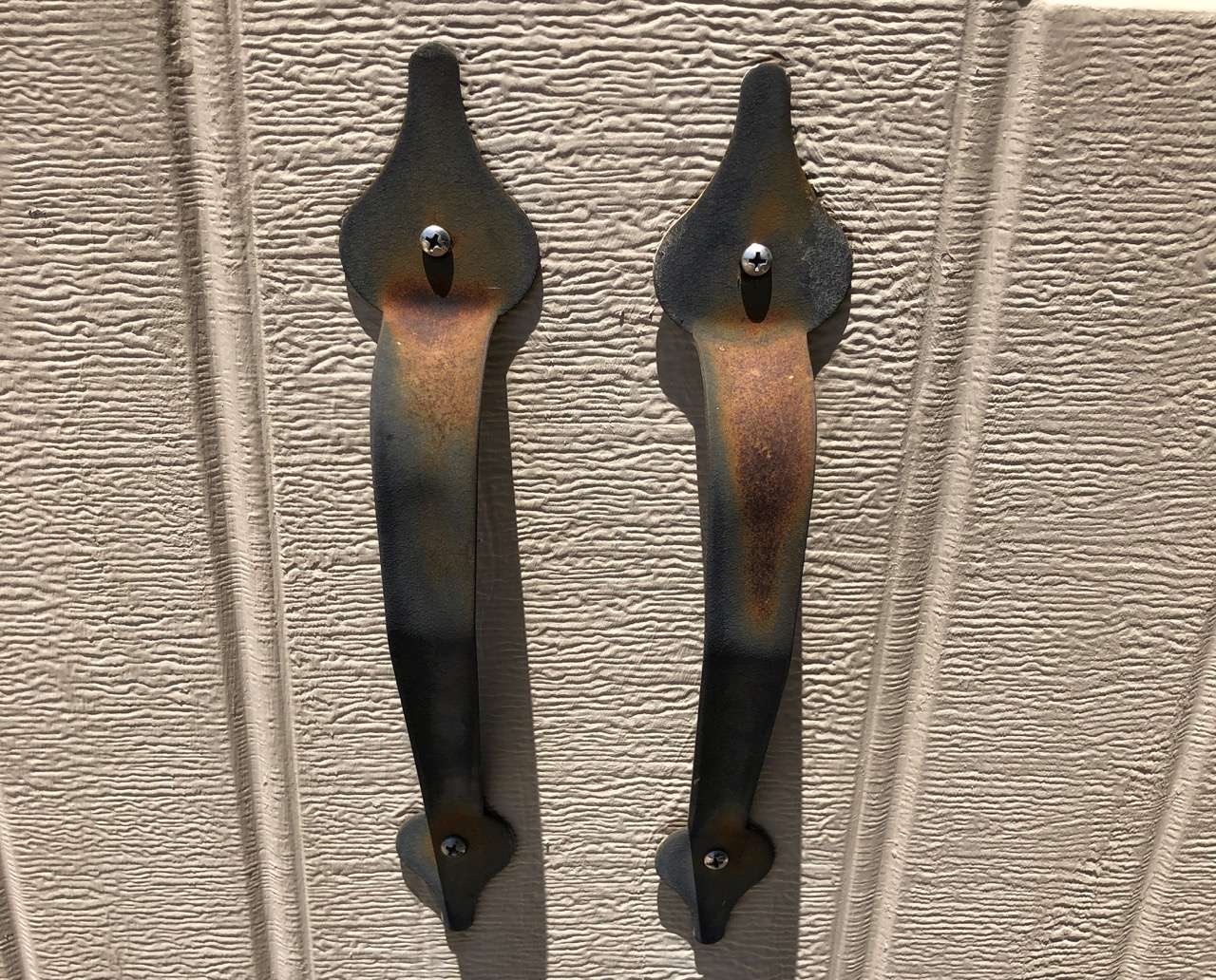
The problem with metal hardware is the paint will fade and eventually rust because the black paint gets so hot. Another issue we sometimes see is rust lines running down the face of the garage door coming from where the screws were inserted to attach the hardware. This is more common in salty or wet environments. Magnetic decorative garage door hardware eliminates these issues by using strong rare earth magnets for attachment and ABS vinyl that is designed to never rust, chip, peel, or flake.
The Benefits of Insulating Your Garage Doors
There are so many benefits to having an insulated garage door, especially if you live in extreme hot or cold climates. Just like the windows in your home, garage doors can be major penetration points for hot air to enter or escape the home. These dramatic shifts in garage temperature can affect adjoining rooms and bedrooms located directly above the garage. Taming the temperatures in your garage will dramatically reduce climate control swings in bedrooms above.
Hobbies or Exercising in the Garage
One of the best reasons to insulate your garage door is if you spend a lot of time in the garage working on hobbies or exercising. By insulating your garage door, you can lower the temp in the garage 10-20 degrees, especially if your garage faces the west sun. The opposite is true if you live in a cold climate. You can maintain a higher temperature, therefore making it more bearable to work or exercise while it’s freezing outside. This makes spending time in the garage more enjoyable and allows you to make great use of this additional space when it is hot or cold outside.
Bedroom Above Garage
Another great reason to insulate your garage door is if you have a bedroom above. Many times, you will hear homeowners say their bedroom is the hottest room in the house. They struggle all year long trying to find a comfortable temperature in their bedroom. As temperatures soar throughout the day, the garage becomes a hot box sitting right below the bedroom, and that heat will eventually rise. Insulating the garage door will lower the temperature of the garage, therefore making it easier to cool down the bedroom above. This will go a long way into helping maintain a comfortable temperature in the bedroom above.
Dampen Noise in the Garage
Insulating your garage door is also a good way to quiet down your home from outside noise. If you have lots of traffic or noise coming from neighbors, insulating the garage door will cut down on the noise that will penetrate the garage, therefore creating a more comfortable living space inside your home. This can also be beneficial if you are trying to keep noise in. If you have a garage band and do not want to disturb the neighbors, insulating the garage door is a great way to prevent noise from leaking out, and it helps with the acoustics in the garage.
Insulating the garage door is also a great way to quiet down a noisy garage door. Standard non-insulated pan doors are normally louder due to the lack of insulation to absorb sounds generated by a garage door when it opens and closes. Installing a garage door insulation kit will cut down on this noise, therefore make for a more pleasant experience at home, especially if you have a bedroom or nursery above the garage.
Pets in the Garage
Many homeowners keep their pets in the garage while they are gone. Insulating the garage door is a great way to make this space more comfortable for your furry friend. You can have peace of mind knowing the temperature is much more tolerable for man’s best friend.
Storing Plants in Your Garage
If you have a green thumb, then your home is probably surrounded with beautiful plants. Many homeowners use the garage to store their precious plants when it gets cold outside. Lately, its seems like the winters have been unrelenting, and having an insulated garage door will help keep your plants alive when the weather becomes too harsh.
Pipes in Your Garage
With the deep freeze that Texas experienced in 2021, many homeowners woke up to broken pipes in their garage walls. Because of this, many have opted to install an insulated garage door to keep the temperatures in the garage above freezing. It wasn’t the inconvenience of a broken pipe in the garage that was so devastating, it was the fact that you couldn’t find a plumber or PVC pipe at your local home store.
Insulate for a Man Cave in Garage
We have seen, on many occasions, garages that have been turned into an area to watch sports or play pool. Homeowners will decorate with their favorite sports team colors and use it as a place to get away and enjoy their favorite game. There is lots of room in a garage to set up a pool table or couches, so you can enjoy the space. Insulating the garage door will keep temperatures at a reasonable level, which will also help extend the life of electronics and furniture.
Can I Insulate the Garage Door Myself?

Yes. There are many kits available online and also at your local home center. If you are looking for the white polystyrene foam, your local garage door company can sell you the sheets that can be cut down. They also sell the trim clips that install on either side of the insulation to finish out the look and help hold the insulation in place. One thing to keep in mind is adding insulation to your garage door will add extra weight.
There are some lightweight insulation kits that can be installed to any garage door with minimal effect to the weight and balance of the door. They use radiant barrier technology to keep your garage door at a comfortable temperature year-round. This kit can be installed by a do-it-yourself homeowner and in most circumstances does not require replacing the springs on your garage door. We have no way of verifying the R-Value claims they make on the package of these products.
Do I Need to Change the Springs on My Garage Door?
When you order a new insulated garage door from your local dealer, it will come standard with polystyrene white foam insulation with a vinyl backer. This is the standard insulation that has been used on all vinyl back and steel back garage doors for many years. What most people don’t know is when you order a garage door with insulation from your local garage door company, the door will come with stronger springs to accommodate the added weight of the insulation.
If you intend to insulate the garage door with a DIY kit, you will want to make sure the insulation you’re installing is not too heavy. If so, you will need to hire a garage door company to install stronger springs or adjust your existing springs. An unbalanced garage door due to added weight will prematurely wear your automatic opener.
What if My Garage Door is 8ft Tall?
If you have a taller than standard garage door that is 8ft tall, you will most likely need to purchase two garage door insulation kits. This will provide the additional panels needed to insulate a taller garage door that has five sections instead of the standard four sections on a 7ft tall garage door. If you have a four section 8ft tall garage door, then you should be fine with one kit. One kit will cover eight and nine foot wide garage doors, while two kits will be needed for sixteen and eighteen foot wide garage doors.
Are Insulated Garage Doors Quieter?
Yes and no.
Some vinyl back insulated garage doors can actually be louder than a standard non-insulated door. For some reason, there are some vinyl back insulated garage doors that are very loud. We can only assume the noise is from the insulation being exposed and shifting inside the panels as the garage door opens and closes.
Steel back garage doors, on the other hand, are quiet and considered to be much stronger due to their triple layer construction. The added layer of steel on the inside of a steel back garage door contains the insulation, which reduces noise and provides protection from damaging the insulation.
Insulated Wayne Dalton Garage Doors Can Get Loud
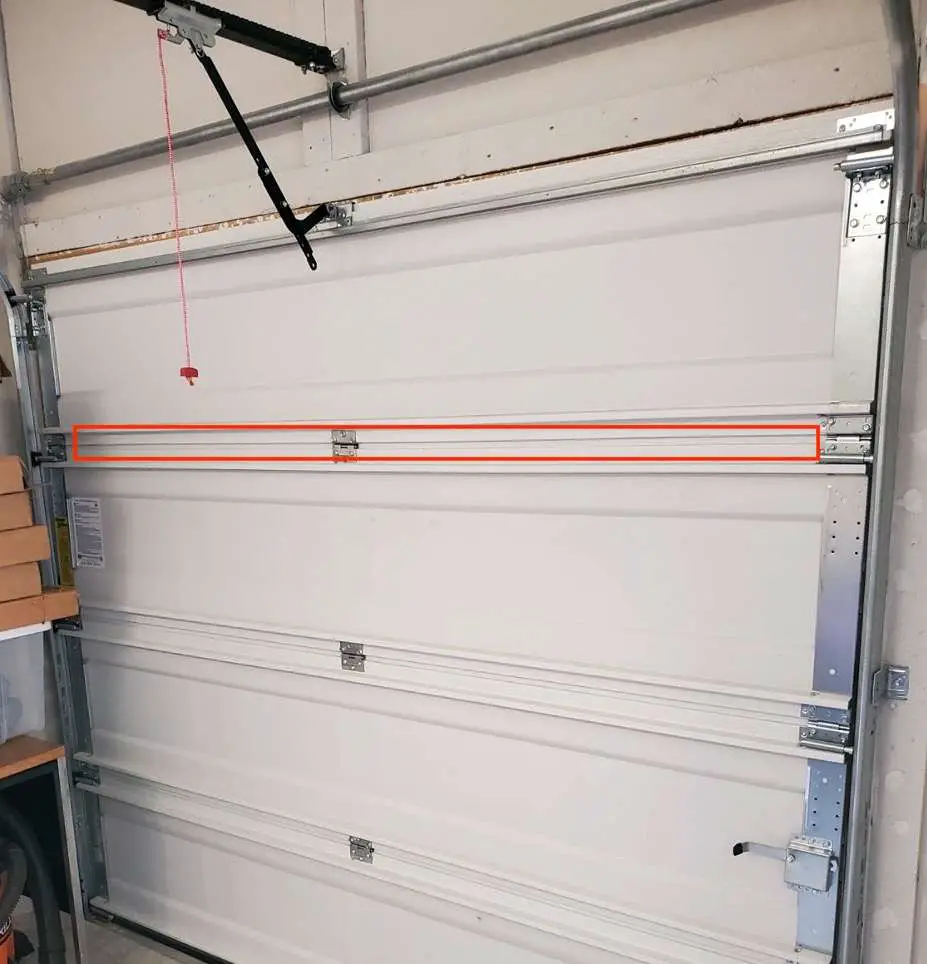
Insulated Wayne Dalton garage doors with the foams seals in between the sections are quiet in the beginning, but that changes over time. As the door wears in the black seals will start to come loose causing the door to be much louder when opening and closing. This is a common complaint with homeowners who are always asking why their Wayne Dalton insulated garage door is so loud after a few years.
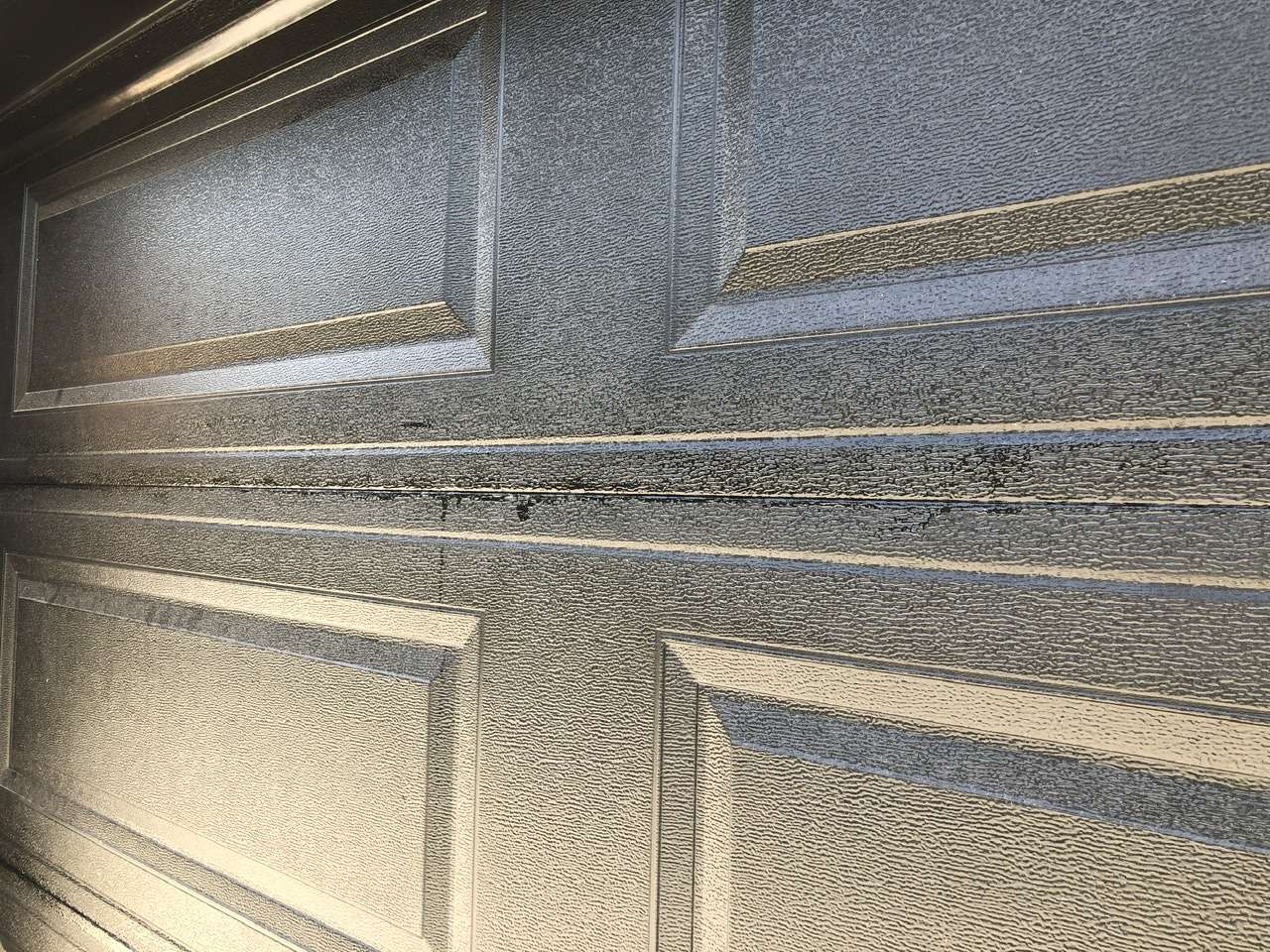
When the seals start coming loose, you will see the black foam hanging down, usually from the inside. It is almost impossible to put it back where it was factory installed. Some homeowners have tried spraying a lubricant in between the sections, but all that ends up doing is staining the outside of your garage door as the lubricant starts to run down the face.
Are There Seals Between Garage Door Sections?
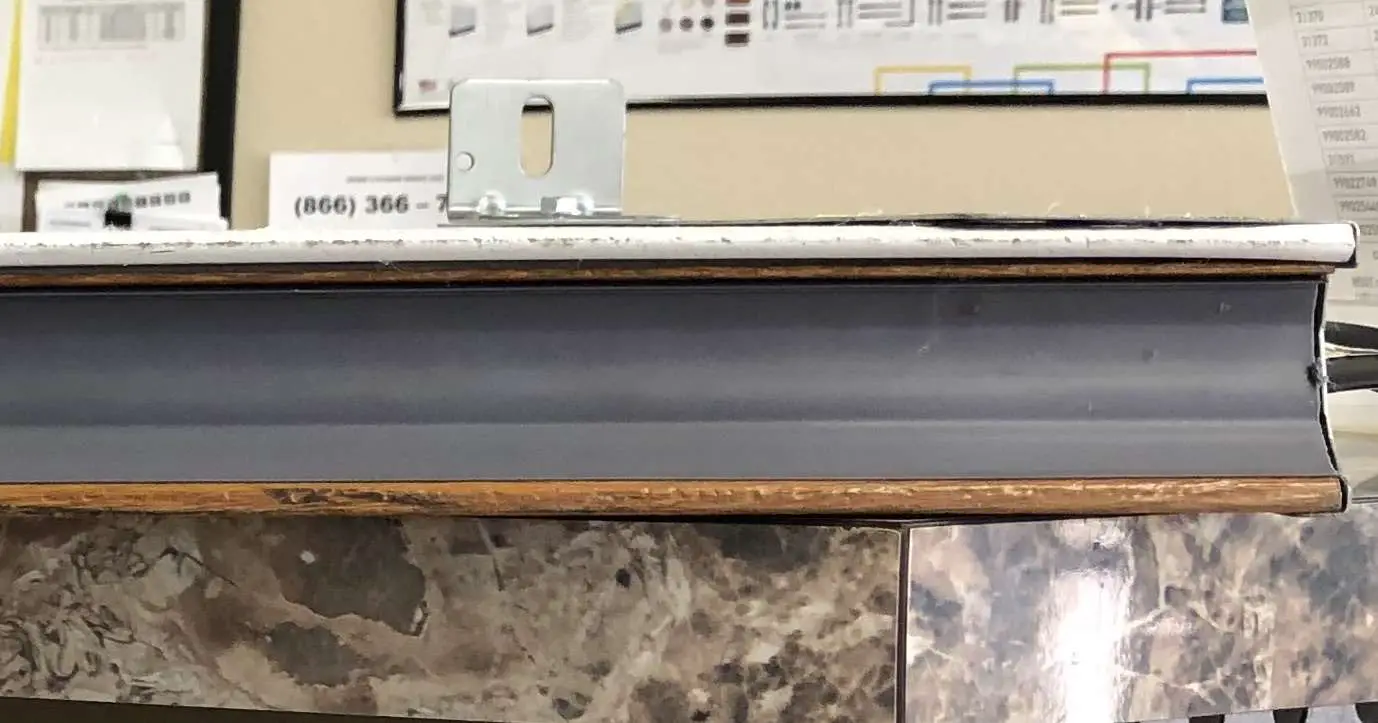
Yes, some manufacturers will build their premium steel back insulated garage doors with rubber seals in between the sections to stop moisture and air from penetrating into the garage. This is especially helpful in cold climates where homeowners are trying to keep air penetration to a minimum. The seals also help prevent sections from freezing together in icy, harsh climates.
Vinyl Trim Installed With Insulated Garage Doors
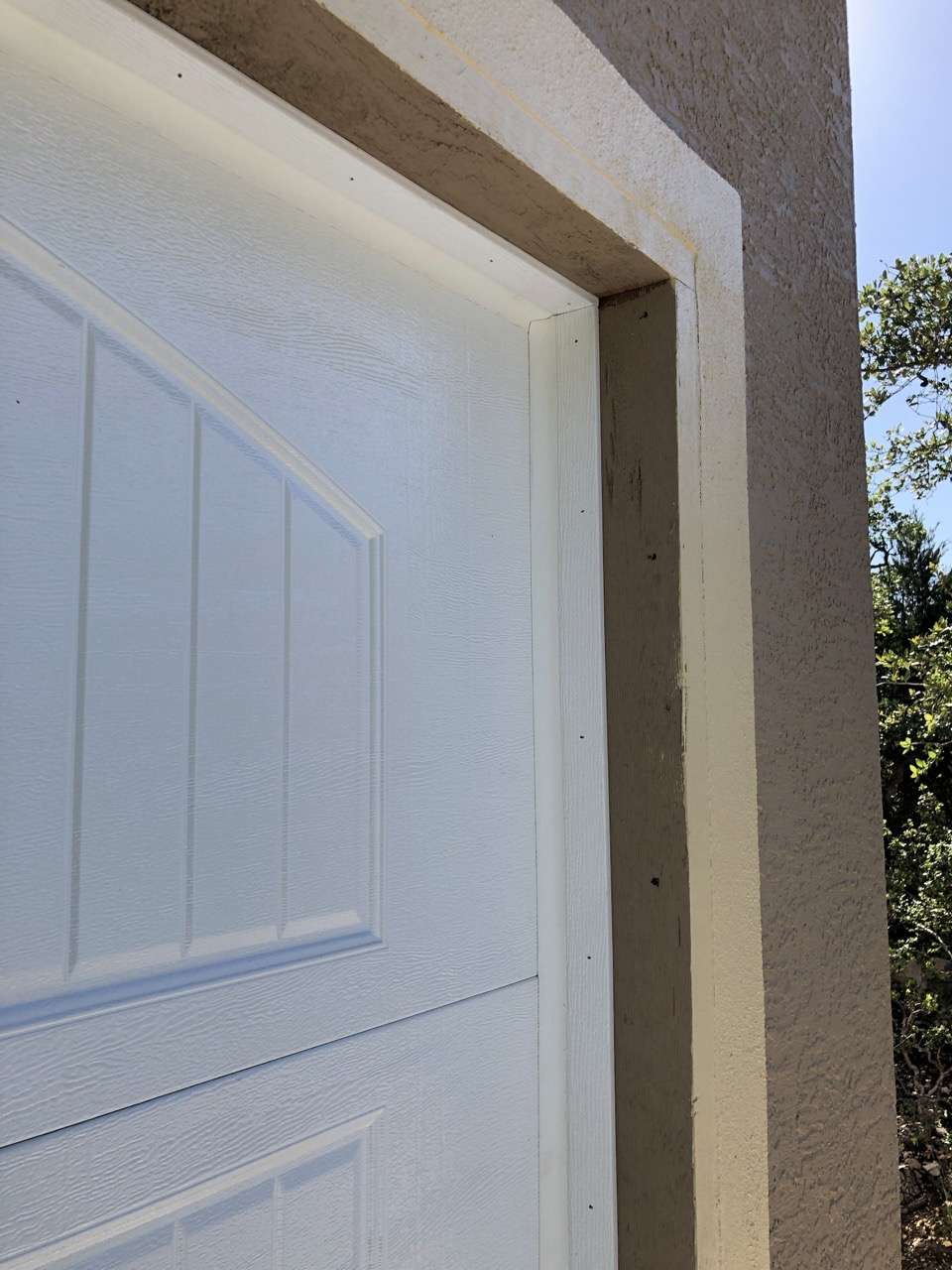
If you intend to purchase an insulated garage door or installing a DIY kit, don’t forget about the vinyl trim. New vinyl trim designed for garage doors is installed on the outside jamb, and it creates a seal between the jamb and the garage door sections. The trim has a vinyl flap that angles inwards around forty-five degrees, which is pushed outward as the door closes. Air penetration around the side and top of a garage door are major losses in energy efficiency. Installing the proper trim designed specifically for garage doors will keep unwanted air, dirt, and leaves out of your garage.
Insulated Roll-Up Doors
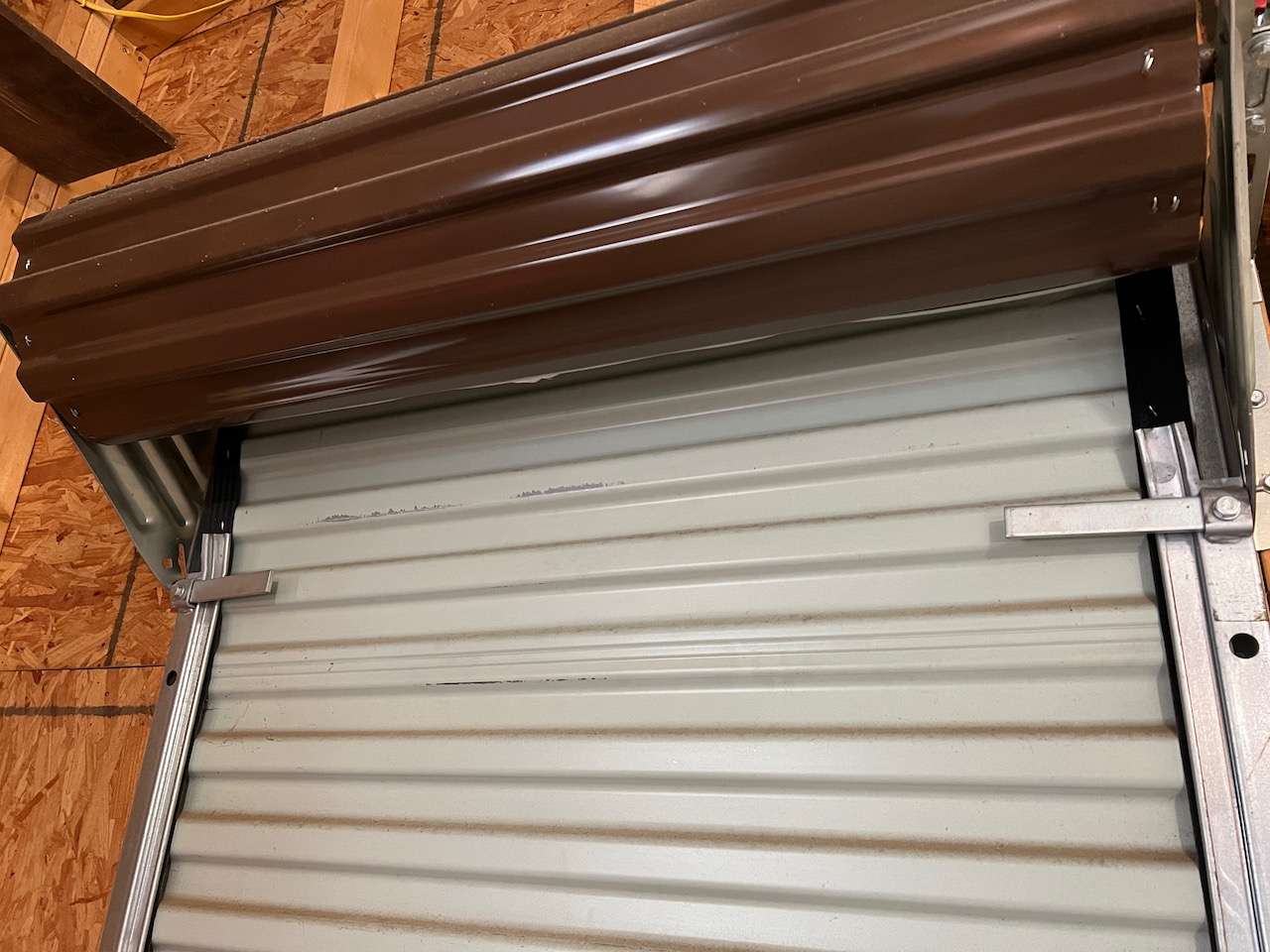
Most residential sectional garage doors are built using 4-5 sections, depending on if your opening height if 7ft or 8ft tall. Everything we have discussed in this article has been about sectional garage doors. But, some homeowners have separate buildings or storage sheds on their properties where a roll-up door is warranted.
Insulation options are available for roll-up storage shed type garage doors. Manufacturers like Janus and Cookson that specialize in roll-up garage doors offer insulation options for their many models. One type is the foil backed, dual layer “air bubble” polyethylene insulation which is secured to the roll-up curtain using a strong adhesive and joined by mylar film.
Conclusion
There is a lot to think about when ordering a new insulated garage door for your home. Today, you have to choose metal thickness, type of foam, door section thickness, traditional or carriage house, insulated windows, and the list goes on. Insulation options have changed due to the demand created by new home builders in major cities all over the world.
Purchasing an insulated garage door can offer many benefits including energy efficiency, quietness, strength, and additional interior protection like found on steel back garage doors. Hopefully, this article has cleared up any questions you might have while researching insulated garage door options for your home.
